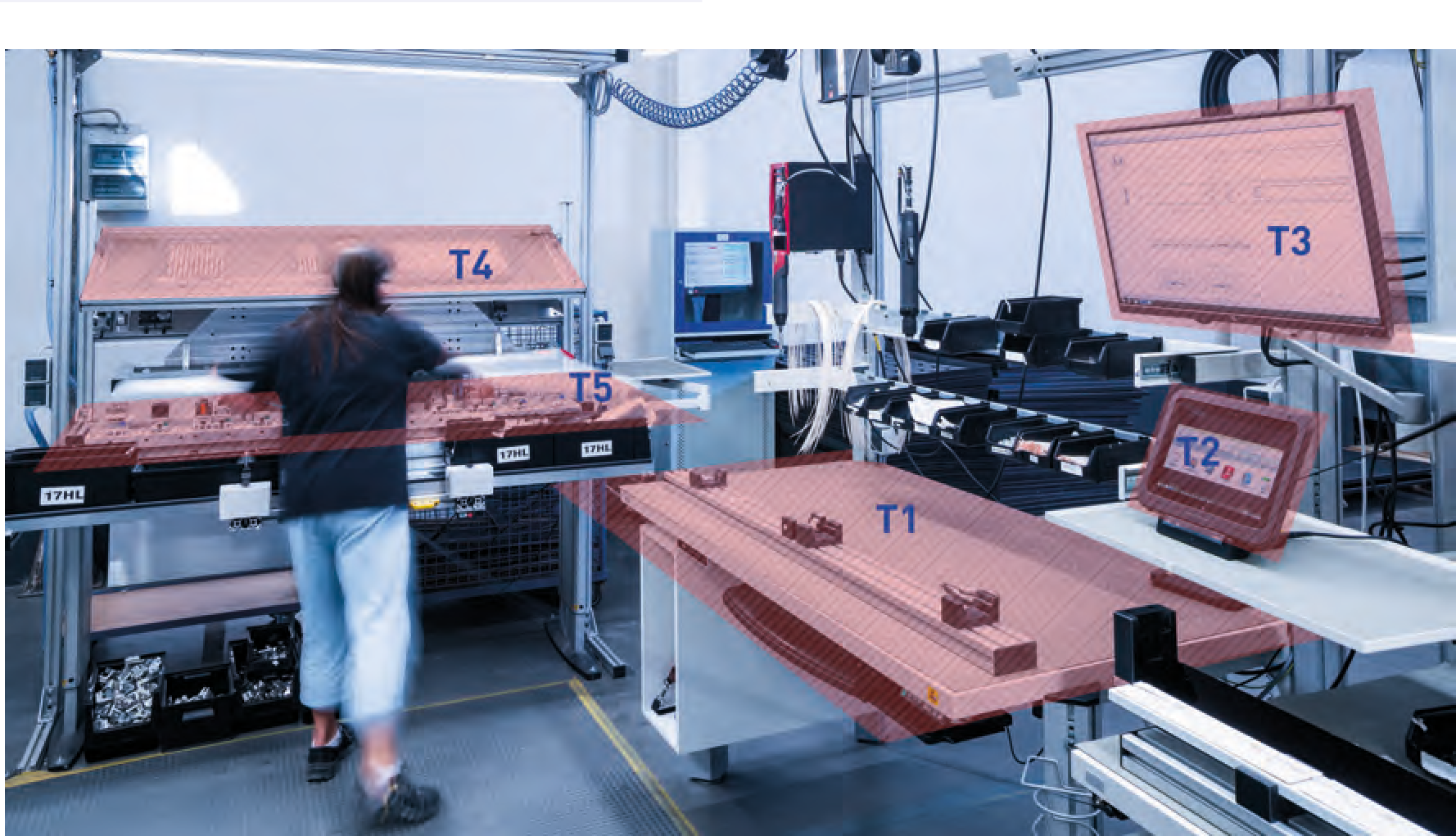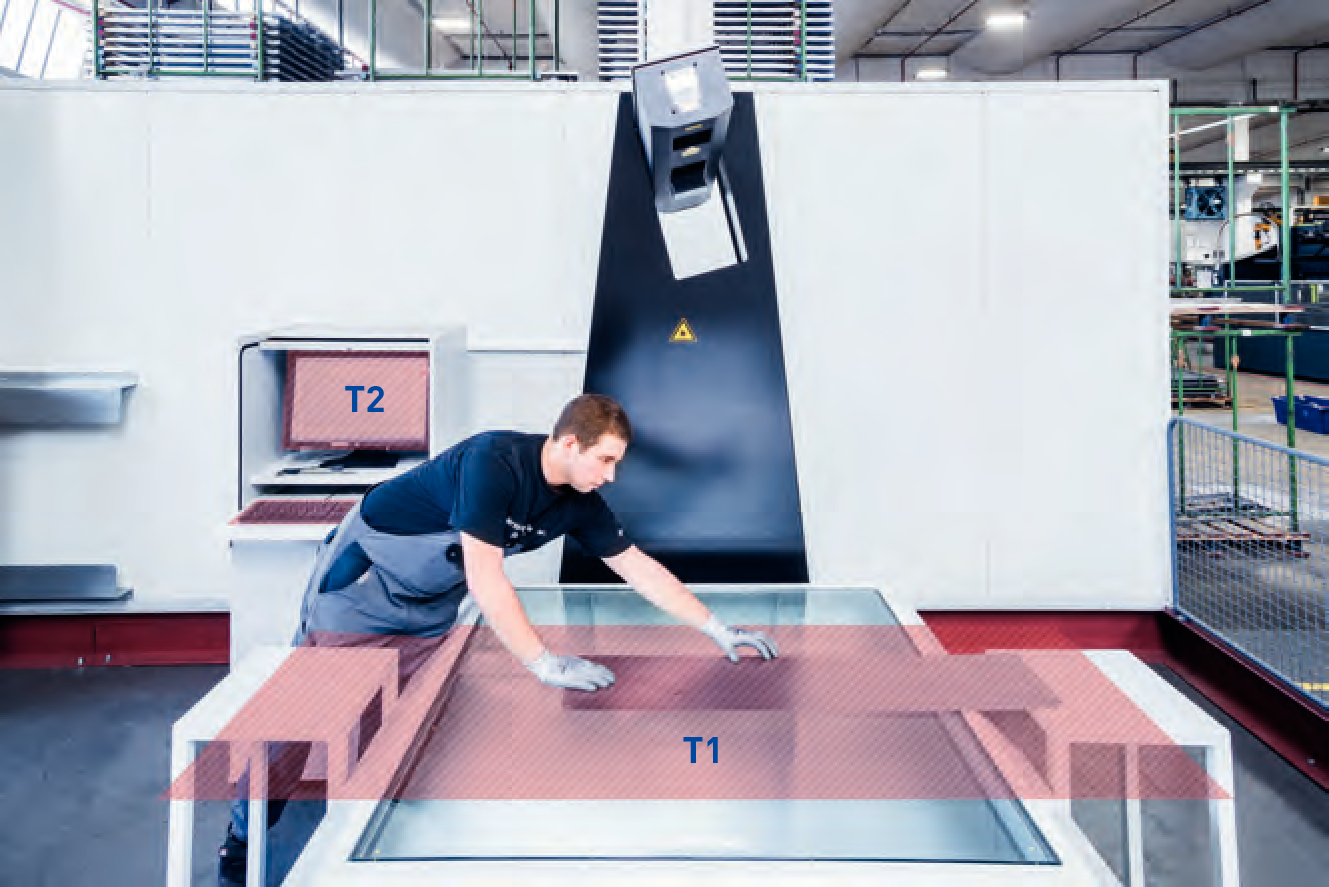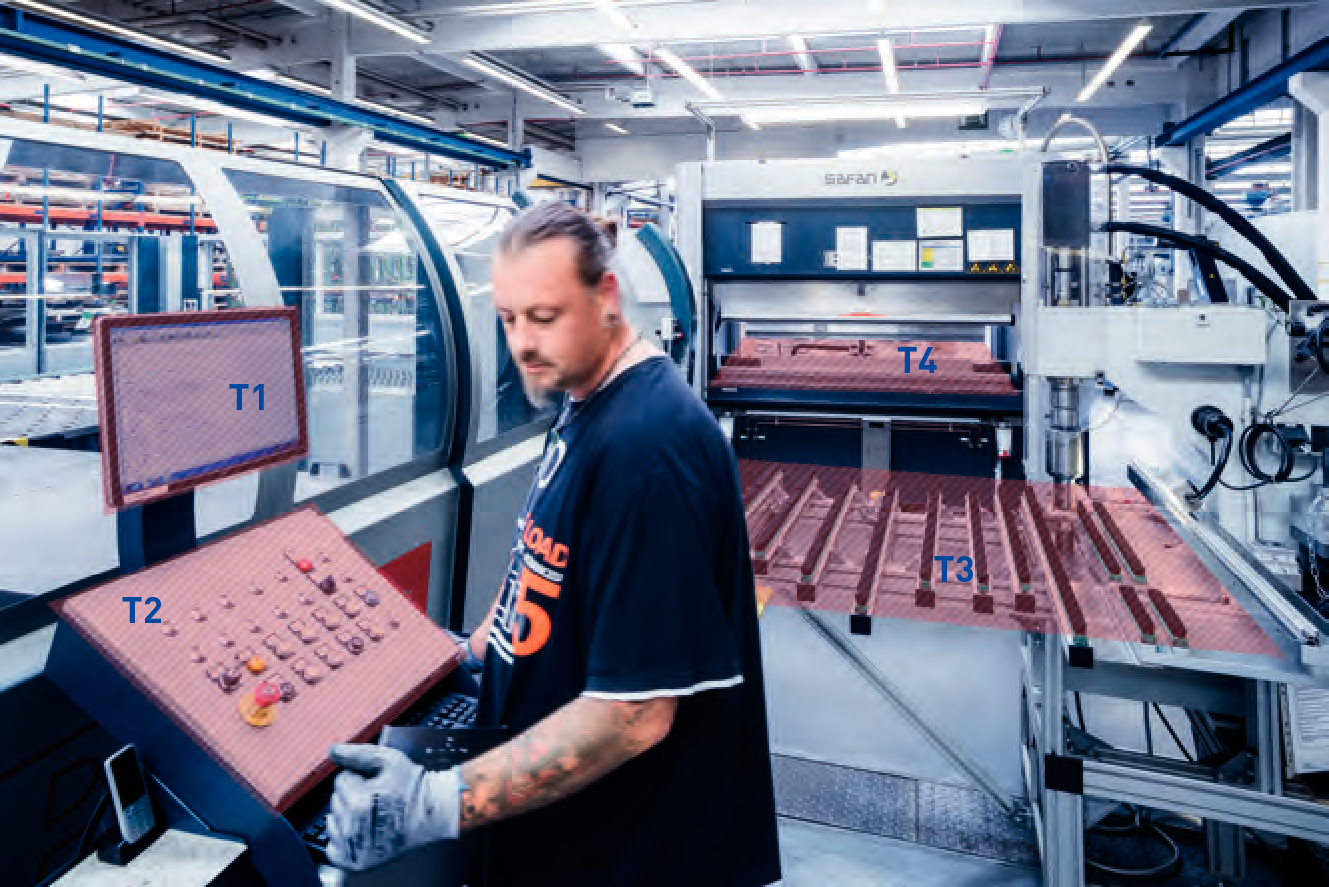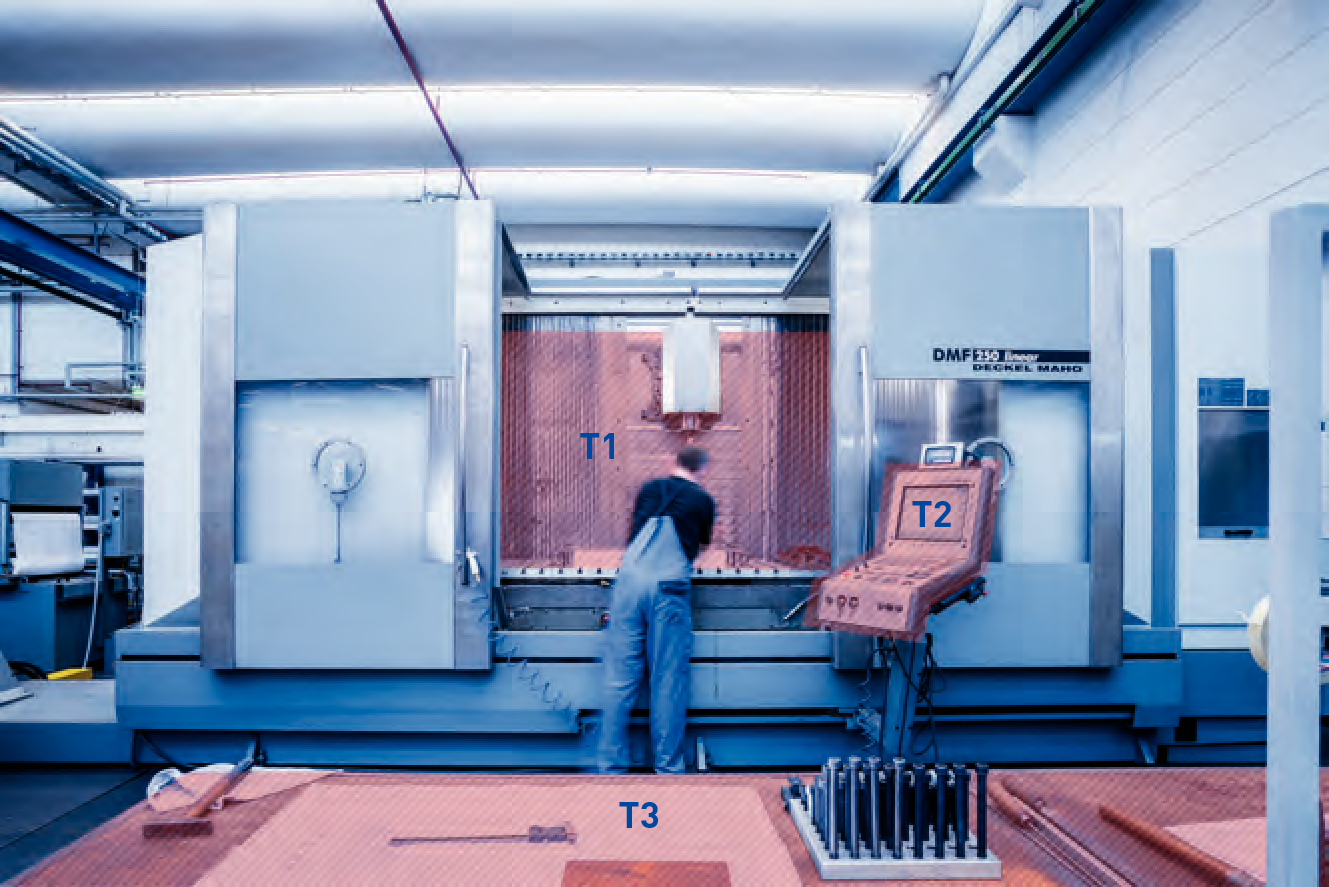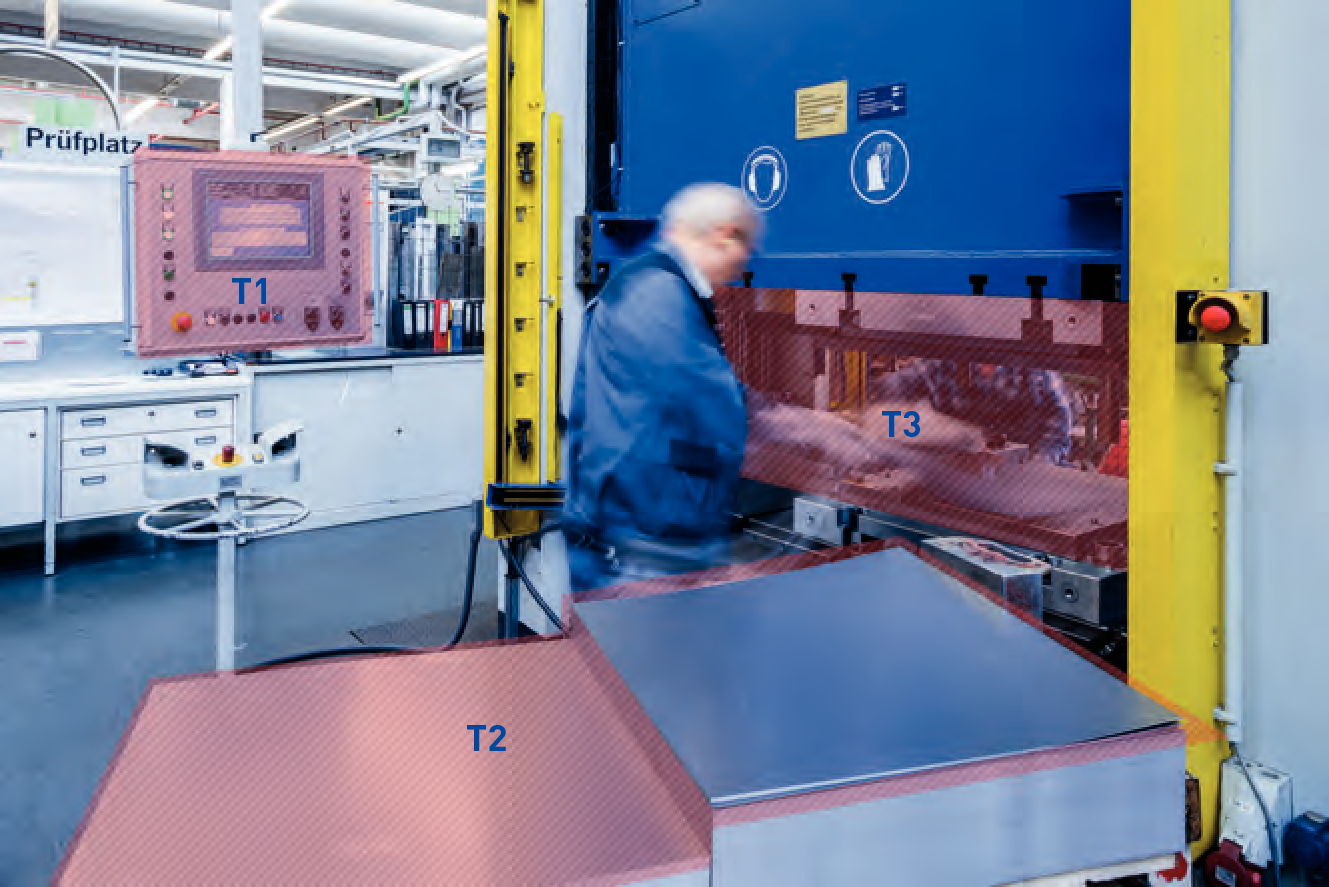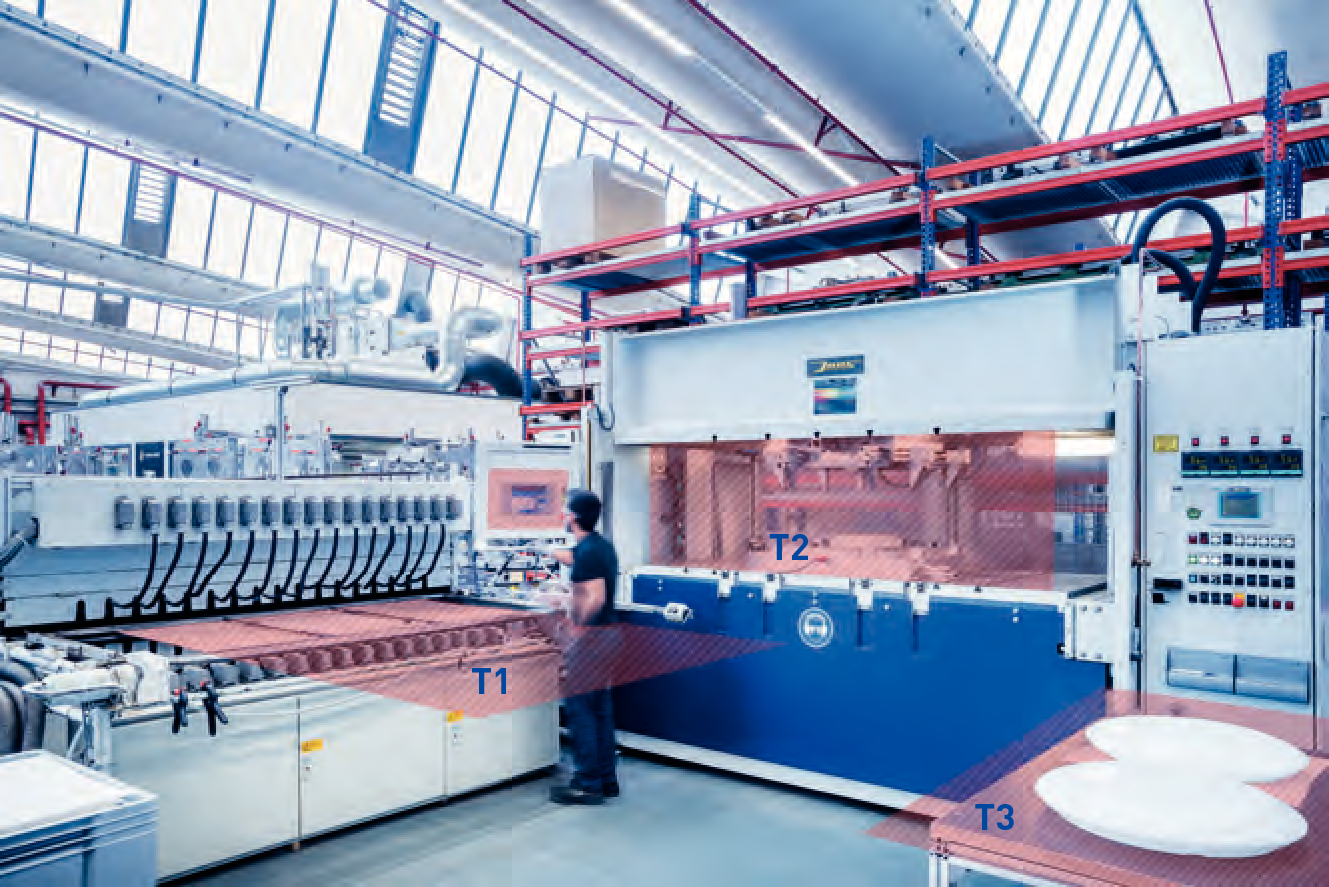Industrial workstations can be very complex due to different visual task areas at the same workstation. This is demonstrated by the assembly workstation example. It features different visual task areas with varying positions (declination) and visual performance, therefore has varying photometric requirements.
For to the visual or working task mentioned in the figure, the corresponding illuminance and its uniformity on the partial surfaces T1 to T5 detailed in the table must be provided. The orientation of the partial surfaces is not merely horizontal, but could be vertical for screens or tilted in the placement area T4. Figure to figure show examples for industrial workstations. Visual task areas are identified as coloured partial areas.
